1) The wording of the DC Circuit's order directing Judge Sullivan to personally respond to @SidneyPowell1's writ shows it is deeply troubled by Judge Sullivan's actions. #appellatetwitter
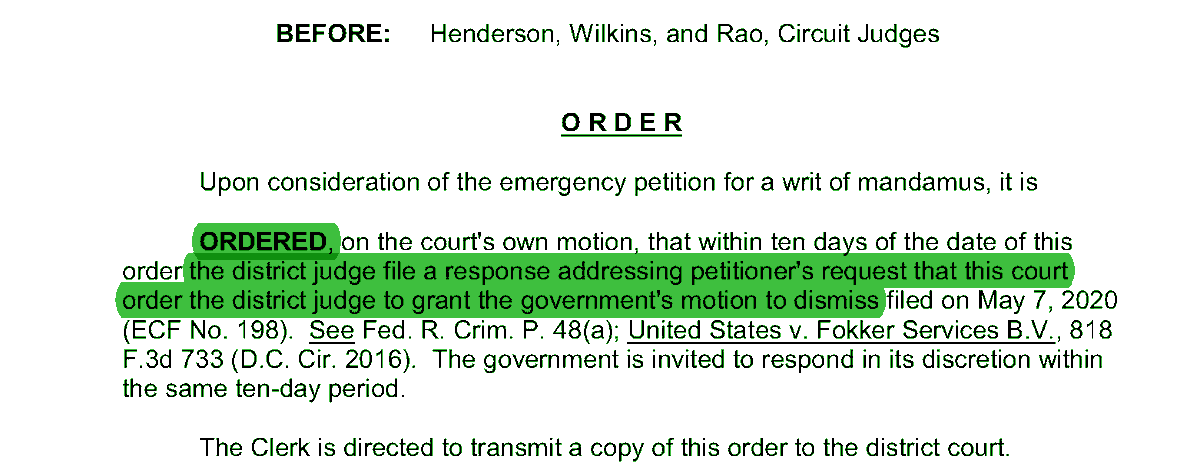
2) The Federal Rules of Appellate Procedure govern the filing and disposition of writs in the federal appellate courts. #appellatetwitter



3) These are DIFFERENT from the rules Judge Sullivan relied on to justify appointing amicus to oppose the DOJ's motion to dismiss. #appellatetwitter



4) Rule 21(b)(1) allows the DC Circuit to deny the writ petition outright, without asking for a response. This is what happens with the vast majority of writ petitions. #appellatetwitter

5) If the appellate court instead orders a response under Rule 21(b)(1), it shows it is concerned and wants to hear more about the matter. #appellatetwitter
6) By obtaining an order for a response, @SidneyPowell1 has already cleared a huge hurdle. #appellatetwitter
7) If the DC Circuit ordered a response and did nothing else, that alone would be a huge deal. But the DC Circuit didn't stop there. #appellatetwitter
8) Rule 21(b)(4) states that the appellate court "may invite or order the trial-court judge to address the petition or may invite an amicus curiae to do so." #appellatetwitter

9) The appellate court is not REQUIRED to order the trial-court judge to address the matter--it has the authority to do so, but doesn't need to exercise it. #appellatetwitter

10) Even if it wants to hear from the trial judge, the appellate court can simply "invite"--that is, request, or ask--the trial judge to respond. It does not have to ORDER the judge to respond. #appellatetwitter

11) And even if the appellate court orders the trial court judge to respond, it can avoid requiring the judge to personally defend the action under challenge by appointing a lawyer as amicus curiae to defend the judge's actions. #appellatetwitter

12) This is what the DC Circuit did in the Fokker case--the main case @SidneyPowell1 relies upon in her writ. See the highlighted portion of the fourth image below. #appellatetwitter

13) In Fokker, the DC Circuit said, "Because both parties seek to overturn the district court's denial of their joint motion to exclude time, we appointed amicus curiae to present arguments defending the district court's action." #appellatetwitter

14) The DC Circuit, in ordering Judge Sullivan to respond to @SidneyPowell1 's writ petition, could have easily appointed a lawyer as amicus to do so. #appellatetwitter
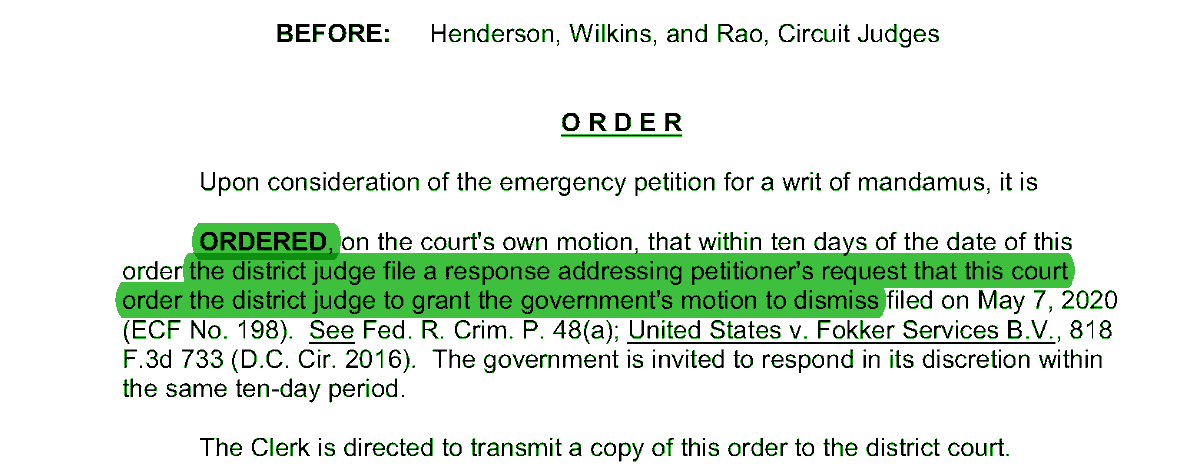
15) Note that an amicus appointed by the DC Circuit to defend Judge Sullivan would have had a job entirely different from John Gleeson's job as amicus appointed by Judge Sullivan to oppose the DOJ's motion to dismiss. #appellatetwitter
16) Had the DC Circuit appointed amicus, that lawyer's job would have been to present legal arguments defending Judge Sullivan's refusal to grant the DOJ's dismissal motion, NOT legal arguments purporting to show why the DOJ's motion should not be granted. #appelatetwitter
17) But the DC Circuit did not appoint a lawyer as amicus to defend Judge Sullivan's actions, unlike in Fokker.
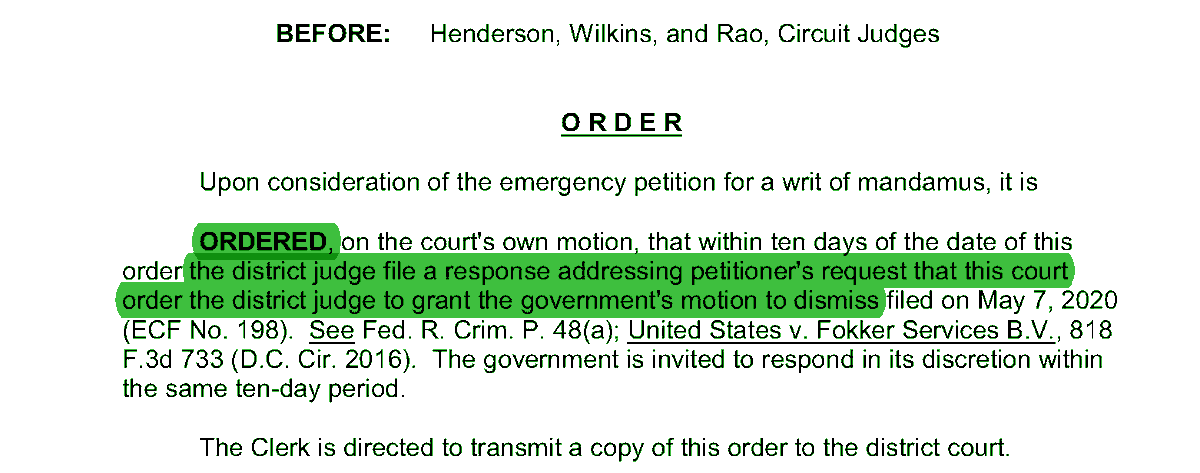
18) Instead, the DC Circuit ordered Judge Sullivan to PERSONALLY respond and defend his actions, without an amicus attorney to do it for him. #appellatetwitter
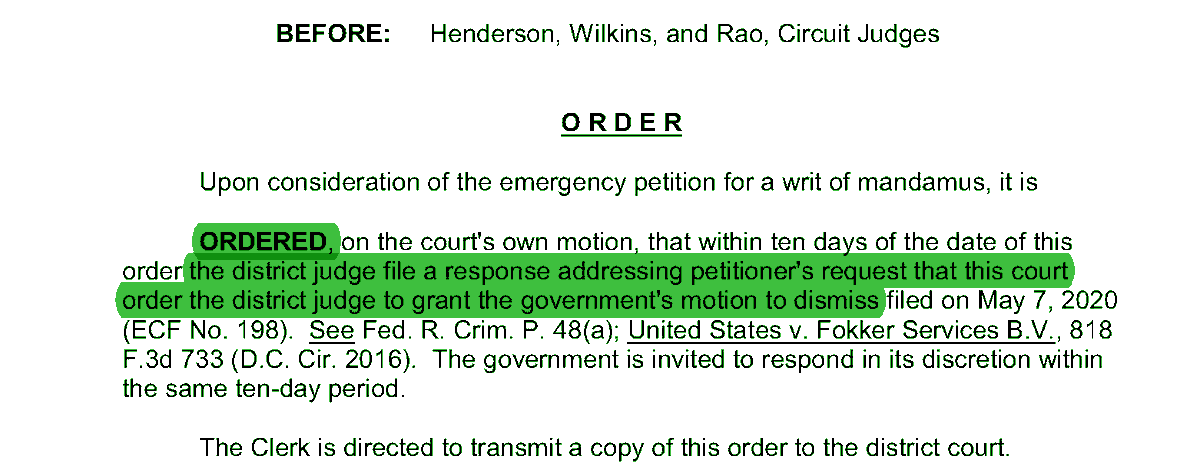
19) This means that Judge Sullivan (and presumably his clerks) will have to PERSONALLY submit written briefing trying to legally justify his refusal to dismiss the Flynn case. #appellatetwitter
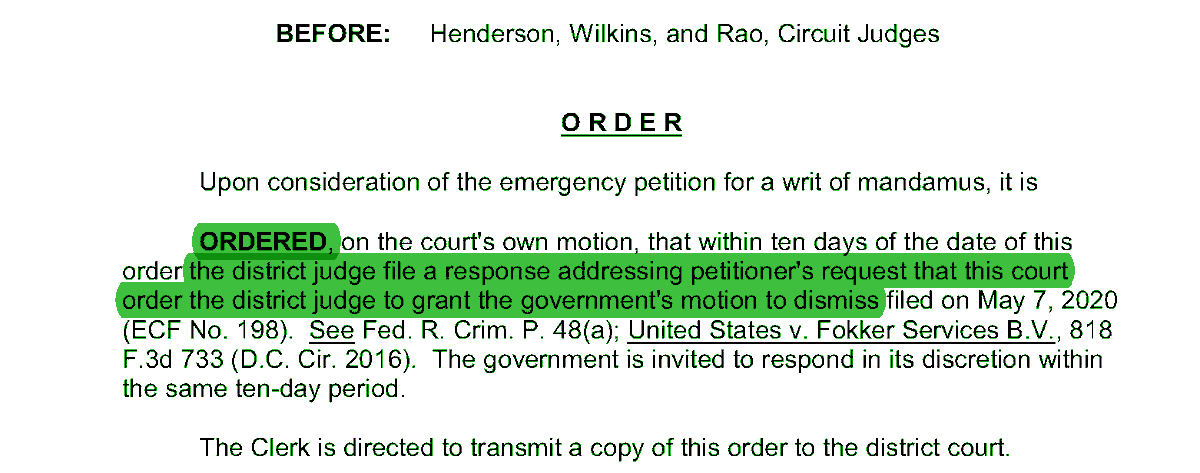
20) The DC Circuit is thus making Judge Sullivan--a lifetime federal judge--publicly and directly explain to them his actions. #appellatetwitter
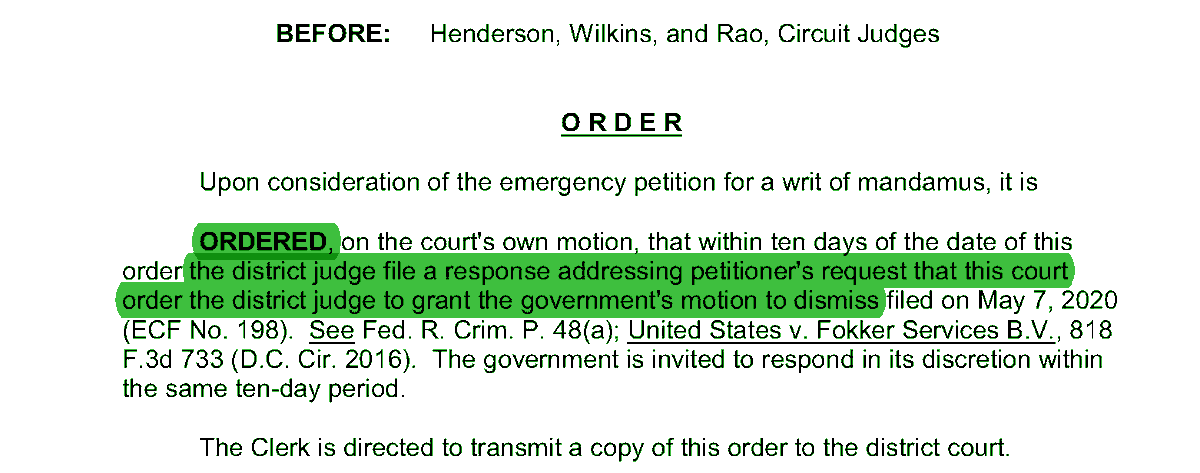
21) In short, of all the options available to the DC Circuit for ruling on @SidneyPowell1 's writ, the DC Circuit, chose the most extreme, rare, and drastic of them. #appellatetwitter
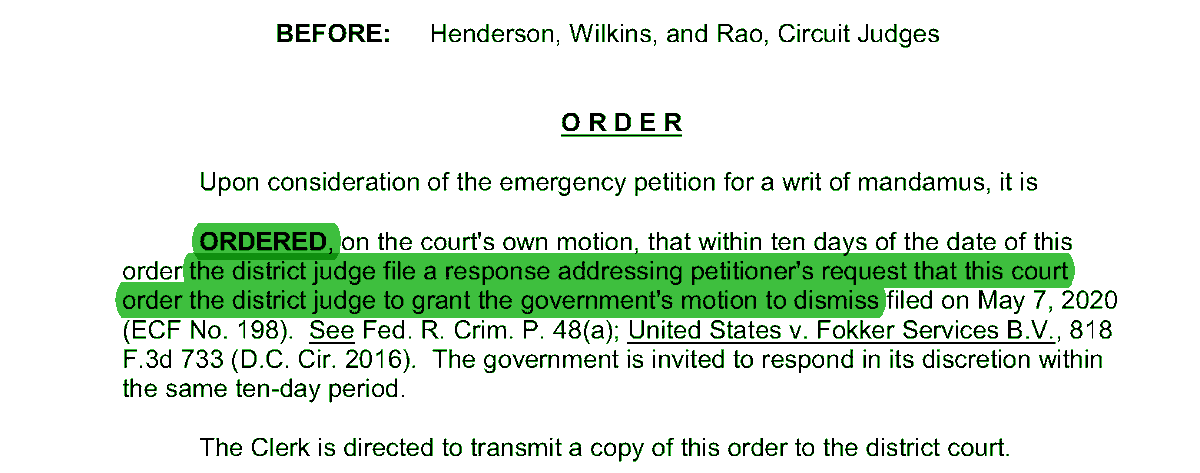
22) It has ordered (not requested) Judge Sullivan to personally (and not through appointed amicus) respond and defend his actions to them. #appellatetwitter
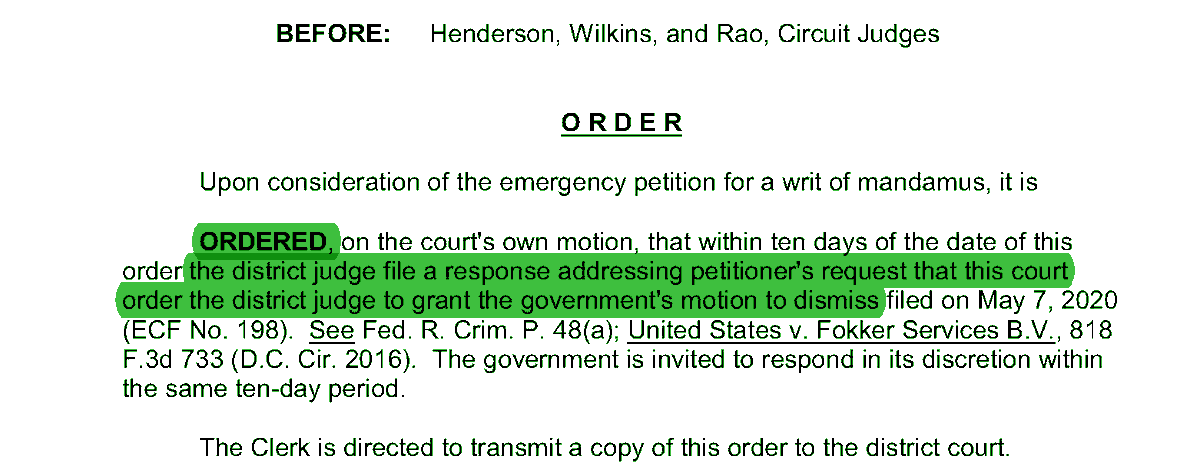
23) This promises to be anything but dull going forward. #appellatetwitter <END>
